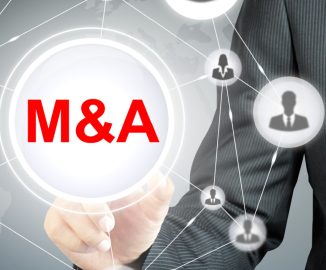If your company and a potential partner are considering a merger or acquisition, you’d hardly be alone. The M&A market was busy last year, but nowhere near a record pace. In fact, it was more of an average year, based on the following.
Through the first seven months of 2022, there were some 22,000 M&A deals worldwide, which was a drop of about 13 percent from the same period in 2021 and a value drop of 32 percent. About half of that global value came from M&A action in the United States.
None of that means those thousands of deals all went flawlessly. Probably far from it. Here are some of the biggest mistakes typically made when deals go south, and what should be done instead.
1. Neglecting to Work Your Combined Talent into the Equation
Companies are about people. Everyone who works on a merger or acquisition knows that, but sometimes as the number-crunching gets done by the lawyers, accountants, bankers, and dealmakers, that bit of insight can get left out.
Instead, your combined companies should start with that factor. How will your M&A impact your people? Who will do what in the new organization, and how?
Your companies’ middle management might suffer the most. Sometimes these folks are given little guidance in the new ways of working. To whom do they report? Have they actually met their new bosses? If so, was it a hurried Zoom meeting with a distracted party who had to meet half a dozen other strange new departments or teams on the same day?
Think of your new workflow as people, not just activity, and you’ll make the M&A road less bumpy.
2. Letting Cultures Clash Can Sink an Otherwise Smooth M&A
There’s always going to be a stronger party and a weaker party. That’s just a reality that makes the deal work out in the first place. Two equally strong companies typically don’t need each other.
The mistake here is in letting one company swallow the other culturally. The thinking can be: They don’t work like us — but they should. After all, the management people of the stronger company think, if the others worked and acted and spoke more like us, they wouldn’t be in this position.
Just like we all have different work styles, so, too, do companies. Avoid lowering morale and encouraging a mass exodus by understanding the differences between your two companies. It’s likely that, over time, the cultures will meld organically if everyone is treated fairly and there’s no pressure to execute dramatic cultural changeovers.
3. Not Communicating the Realities of the M&A Transition
M&As are messy. From the beginning, the business world knows that the deal is probably critically necessary from the viewpoint of at least one partner (and maybe both). Otherwise … why are you here?
Other problems come up almost immediately. There’s that culture clash we mentioned earlier. There are layoffs to both pay for and justify the deal. Finally, you’ve got two management teams who aren’t used to having to accommodate others.
The business press knows the kinds of issues likely to pop up. So do your shareholders and other stakeholders. Why aren’t they hearing it from you?
Your newly blended company continues to put out press releases. Maybe too many of them don’t say much. Instead, tell the truth. Explain the issues and obstacles in front of you and your combined team’s strategies for solving them. You’ll gain enhanced credibility and trust — and not really surprise anyone by stating the reality of the situation.

4. Paying Too High of a Price for Your Acquisition
Hot markets can cause corporations to make rash and costly mistakes before their competitors get a chance to do the same. Consider the $65 billion failed marriage of Time Warner and AOL.
Time Warner knew all about stodgy “old” media in 1999, but what was this digital media thing all about? The organization had no idea but knew that a company called AOL knew all about it. What better way to get into that business in a sizzling hot market than by acquiring that young bride of a company…whatever the cost?
Talk about cultures clashing. It was old world vs. Silicon Valley, whatever that was (from Time Warner’s perspective). Just one year after the hookup, the combined company took a $99 billion write-down, the largest ever at the time.
Don’t get caught up in a new frenzy and let the market carry you away. Know what you’re getting before you get it.
5. Not Asking (or Not Continuing to Ask) Your People How You’re Doing
No employee looks upon a rumored merger or acquisition with anything more than suspicion. Cynicism is, after all, pretty much built into the American work culture, and for good reason. The term transparency is relative. Its definition is pretty much what management says it means.
After the so-called “right-sizing” of the new enterprise, your remaining people are feeling especially vulnerable.
During this long transition process following an M&A, the management team has other things on its collective mind. Nevertheless, it’s vital that leadership checks in with its new and existing workforce on a regular basis.
Don’t just send communication one way, from management down (though be sure to do this regularly, too), but also solicit input. Invite advice and even negative feedback. Find out what your people are thinking, and then take concrete actions to improve morale and your employees’ day-to-day whenever possible.
Keep in mind, while in some areas the transition might be deemed to be over in a matter of months, it’s likely still going on with your people in the trenches. They have new bosses, new policies and work arrangements, and perhaps an absence of familiar faces. So keep listening.
Keep soliciting their advice and input. Keep making things better by addressing their issues. That might reduce talent exodus and boost overall morale.
Your Company and People Come First in an M&A
Thinking of triggering an M&A deal in insurance? Talking to a professional M&A advisor is a good idea if you are new to the scene. At Confie, we have a successful M&A history because our people always come first. Call us at (714) 252-2500 or contact us today to find out more about us.


